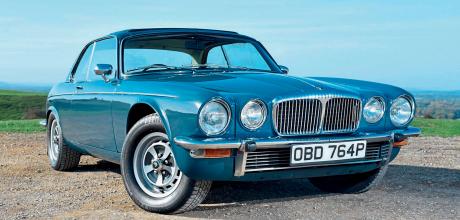Driving the manual 4-spd 1976 Daimler Double Six Coupe
We go back in time to sample a car you couldn’t officially buy but which could so easily have been built.
WORDS PAUL WAGER
PHOTOGRAPHY PAU L WALTON
SPECIAL ORDER — CLASSIC DRIVE
Driving the manual XJ12 coupe - Sampling a car which was never made but could so easily have been a winner: a four-speed Daimler Double-Six coupe.
Present-day ride and handling engineers would do well to borrow a classic XJ
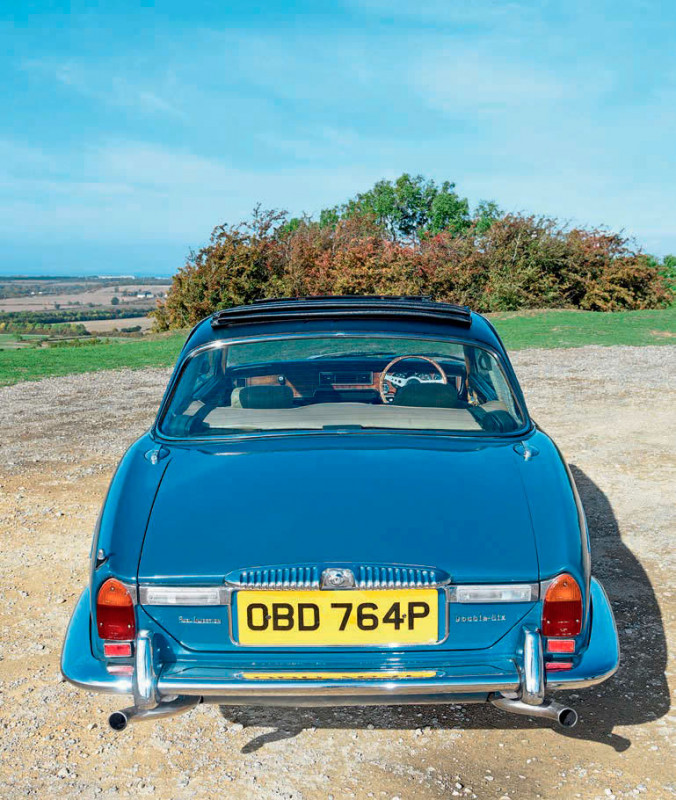
It’s the spring of 1976 and in a British Leyland dealer a customer is giving the Jaguar Daimler salesman a hard time: clearly a man of considerable means, he knows very much what he wants and he intends to get it. What he wants is a two-door coupe, with the elegant pillarless style then in vogue, a prestige badge, enough power to set it apart from the run-of-the-mill Granadas and Mantas… and a manual gearbox. As his stringback gloves testify, this is someone who likes to be in control and for him a lazy three-speed self-shifter just won’t cut it.
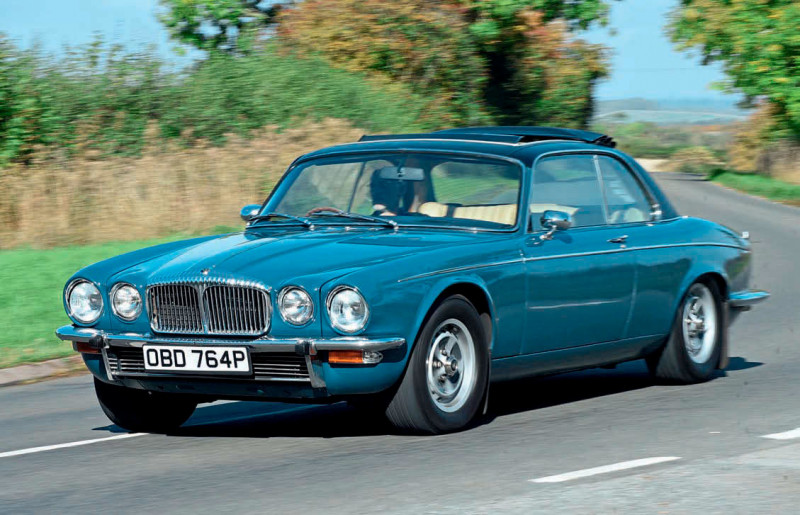
Sweating under the showroom lights as the weather already warms up for that year’s legendarily hot summer, our hapless BL chap tries to explain that yes, he would be delighted to supply a Jaguar coupe and with a V12 badge on the boot, nobody would dare to question his muscle, horsepower or financial. But the manual shift? Sorry sir, it’s just not an option.
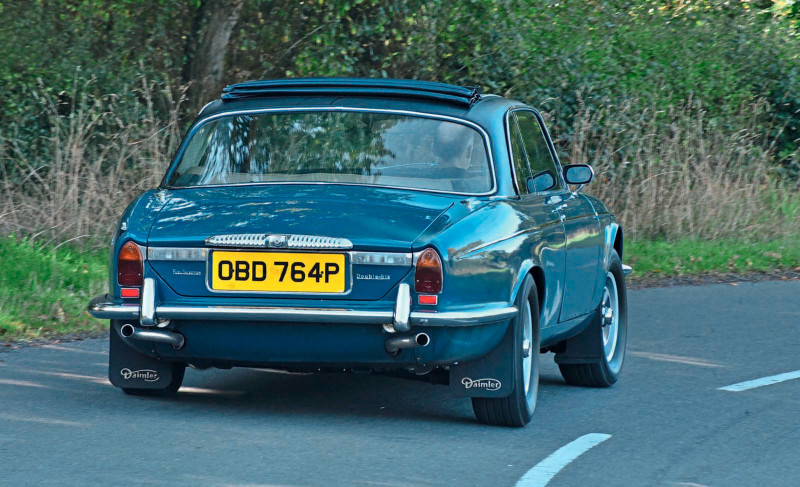
Not a man to take no for an answer – after all, compromising wasn’t how he got to the point where he had the price of a nice house to spend on a car – our demanding customer presses the point. Not so gently he mentions the 3.0 CSi E9 in the BMW showroom down the road and of course the Mercedes dealer in the next town has already hinted at a W123 coupe on the horizon… at which point there’s a mumbled promise to make some enquiries and see what can be done.
Present-day ride and handling engineers would do well to borrow a classic XJ
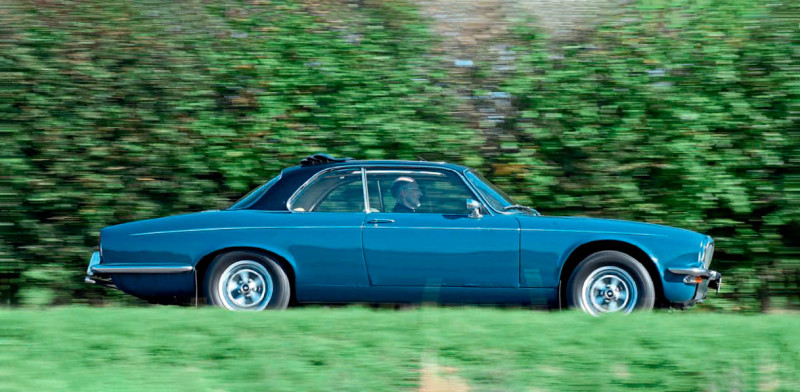
Behind the scenes a frantic call or two is made to Browns Lane and the request eventually lands at the door of the fledgling SVO operation – or at least the enthusiastic skunkworks department which would eventually become SVO.
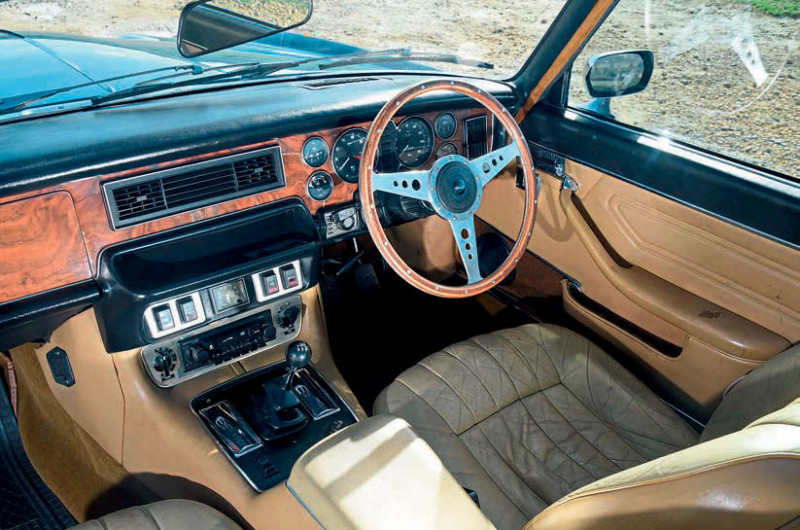
Console was trimmed in period factory style with parts from the 4.2 model.
Naturally, the combination of manual gearbox and V12 is in fact a straightforward conversion, since both the Series 3 E-Type and a handful of early examples of the XJ-S were offered in manual form. In short order a parts list is assembled, the job is costed and a delighted customer makes an order. To add some icing to the commission cake, the coupe is ordered in the unusual Daimler Double Six trim, allowing an equally delighted salesman to book a week in Spain to escape the sweaty BL showroom.
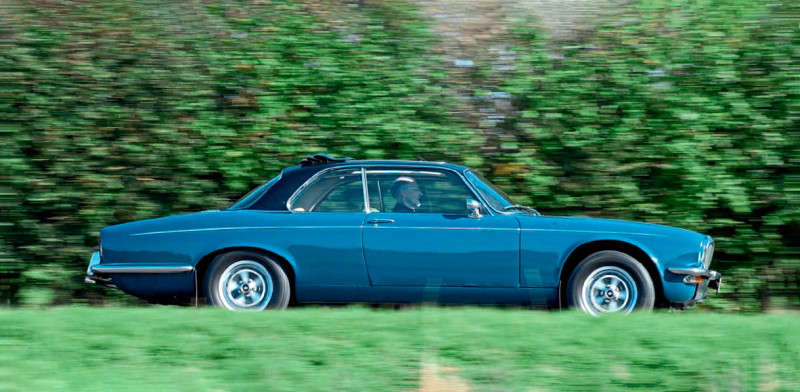
Did this really happen? Who knows, it may well have done but officially the V12 coupes were only ever offered in automatic form and as yet nobody has stumbled upon a factory-produced manual.
It doesn’t mean it wasn’t considered though, which is what intrigued Simon Currell, the owner of the car you see here. What if, he thought, British Leyland’s proposed return to the European Touring Car championship for 1977 with the XJ12 coupe had required Jaguar to build a number of manual cars in 1976 for homologation purposes? What would the result be like as a road car and what if some of them had escaped into public hands? Since Simon already owned a Series 3 XJ12 – a former Jaguar press car notable for having appeared in the TV series Boon, why not make the coupe a little more sporting?
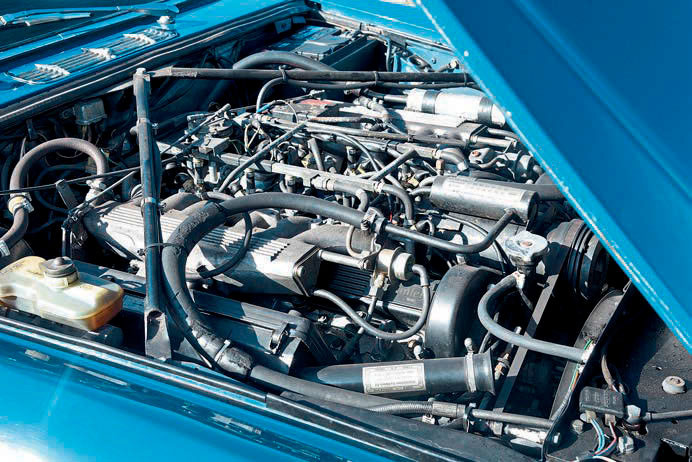
As for the nuts and bolts of the conversion, he was unusually confident having previously converted an XJ-S to manual. Oh and the knowledge and contacts gained during a long career at Jaguar were no doubt pretty handy too – as was the fact that these days he runs his own classic car business, Retro Motor Services in Wolston, Coventry.
The car itself was bbought as a project following an advert in the JEC magazine and the project itself was born from an off-chance remark on the way home. While Simon was inspecting the Daimler, a mate who had accompanied him had noticed something else in the shed, that being a manual XJ-S, itself something of a rarity with just 352 made.
In short order an offer was made to buy both cars, with the intention of using the XJ-S box for the Daimler. “The purists will hate me,” laughs Simon, acknowledging the horror in certain quarters at the idea of destroying a rare XJ-S to modify an equally rare Daimler (just 407 Double Six coupes were made), but in truth it’s not all that bad. As he points out, the XJ-S wasn’t a complete car and as expected, the conversion to the Daimler was entirely reversible.

After scouring the parts books, Simon was able to install the manual box using all the period-correct parts, with the gearbox mount even bolting straight up. The cosmetics were easily sorted using the centre console ‘ski slope’ from a manual 4.2-litre car, with the only bespoke part being the propshaft.
For this, Simon enlisted local Coventry specialist Dave Mac who rather than modify an existing propshaft simply made up a new one – and as Simon reports, at reasonable cost, too.
Opening the bonnet reveals nothing to suggest this isn’t a factory-produced car, although after a few seconds there’s one very obvious difference: the V12 is in fact a later HE engine, installed to replace the tired unit the car came with. A neat Daimler sticker ensures it looks the part though, while the HE spec does offer a small but useful uplift in economy.
As for the rest of the car, it remains as bought, including the big Webasto sunroof which with the pillarless design means Simon’s Daimler offers most of the experience of a full convertible. Indeed, it’s a measure of how pleasant it is with windows down and roof open on a sunny day that shortly after acquiring the Daimler he sold his XJ-S convertible.
The combination of manual box and injected V12 is an intriguing one and on the road it doesn’t disappoint. I’m always wary of driving other people’s cars too hard but as we set off in pursuit of our photographer (former JW editor Paul Walton who for complicated reasons was driving an Aston Martin DB7) Simon wasn’t struggling to keep up.

As I discovered for myself, the manual box gives the V12 a much more lively feel, the unit seeming happier to spin freely and giving the car something of a Jekyll and Hyde character. The ample torque gives the option of wafting around lazily using just one or two gears, arm on the window and little more effort required than piloting the automatic… but should more dramatic progress be required, it’s there for the asking. Work the box, spin the engine above 2000rpm or so and it really offers respectable pace, all the while remaining as smooth as it does at tickover.
Unsurprisingly, it’s the torque which shoves you down the road, with very modern mid-range pace available without ever extending the engine. Certainly it remains a civilised experience at all times and in fact driving briskly across country in the manual car is in many ways more refined than the GM automatic with its often unpredictable downshifts and jerky kickdown. No, the four-speed Jaguar box doesn’t like to be rushed, but once you’re used to it there’s a pleasure to be had in achieving smooth shifts.
Refinement is also aided by the XJ’s superb ride quality and as we followed both the Aston and an XKR to our photo shoot location it was notable how the more modern cars bounced over rough surfaces where the Daimler was unruffled – especially impressive considering its lack of B-pillars. Not for the first time, I heard the comment that present-day ride and handling engineers would do well to borrow a classic XJ to see how it should be done.
It’s only at motorway speeds that you notice the lack of a fifth gear or overdrive, this being explained by the fact that the Jaguar overdrive of the day wasn’t considered capable of handling the V12’s torque. Yes, a fifth ratio could have been added by using the LT77 box as found in the manual Series 3 cars but this would have required a special bellhousing and other modifications which would have taken the project away from Simon’s goal of creating the car which SVO would have built up to customer request back in the day.
And as for our mythical customer of ’76, did he make the right choice? Having owned examples of both the BMW and the Mercedes competitors, Simon reckons the Daimler has the edge. Even in properly trimmed CSi form (as opposed to lightweight CSL E9) the BMW feels old fashioned against the XJ coupe, noisy and harsh riding while the Mercedes is undeniably a car of quality but even in sixpot 280CE C123 form does feel rather staid and sensible despite its pillarless style.
Perhaps the greatest compliment comes from a more modern era though. With the photos done, as we contemplated the incongruous pairing of DB7 and Double Six, all three of us were agreed on the car we’d take home: yes, it was based on the XJ but was the 46-year old Daimler rather than the supposedly exotic Aston Martin.
Thanks to
Simon Currell for bringing his Daimler along for our photo shoot. If you’re looking for a classic car specialist with an expertise in Jaguars, then you’ll find his business Retro Motor Services at Unit 4, Heath Business Park, Coalpit Lane, Wolston, Coventry CV8 3GB. Call 07973 762295 or email simon@retromotorservices.co.uk


